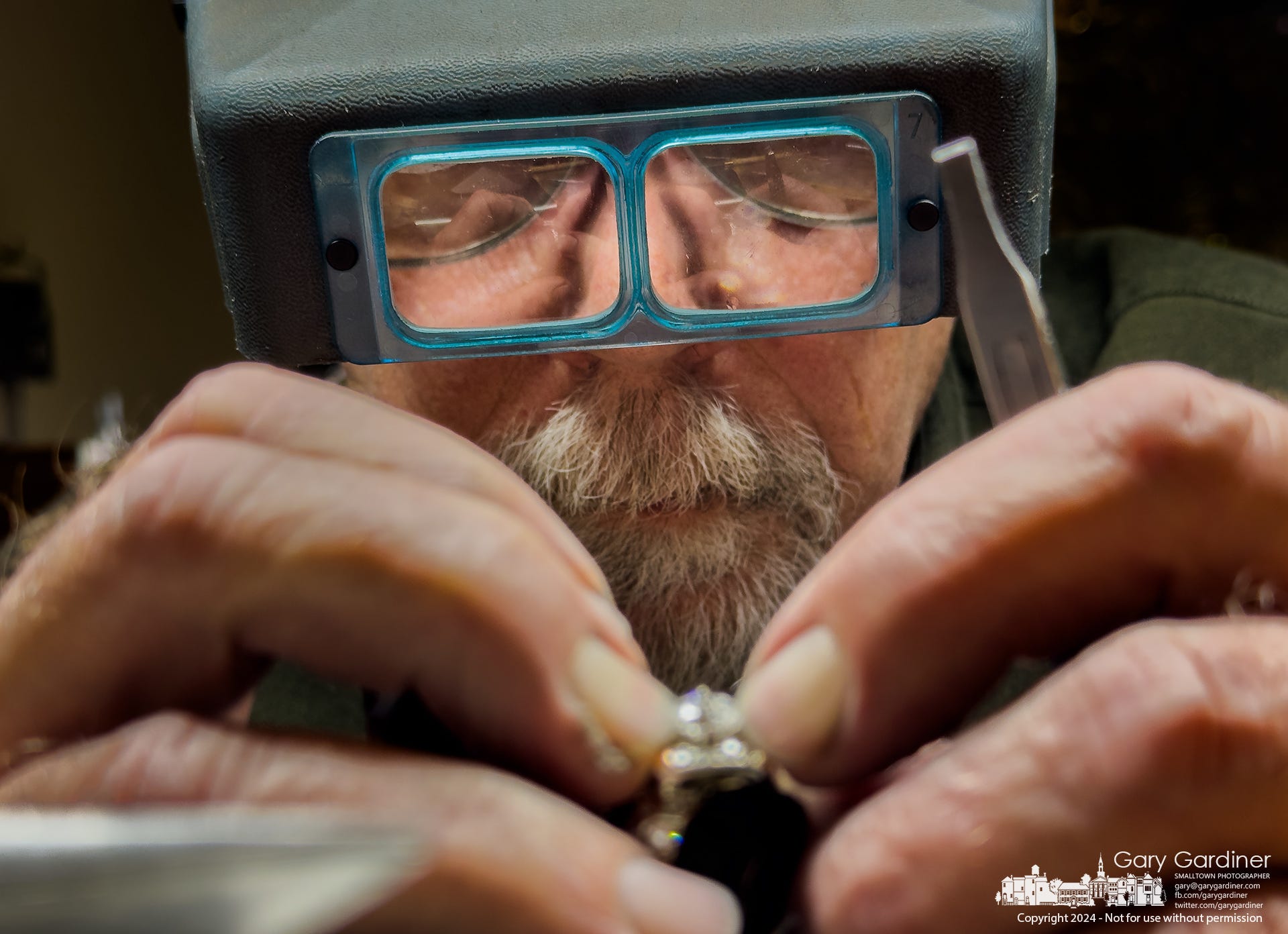In The Eyes Of A Jeweler
This photo captures a jeweler's intimate and wonderfully detailed moment at work.
The close-up composition is powerful, bringing the viewer directly into the jeweler's world. With its blue-framed lenses, the magnifying visor he wears draws attention to his intense concentration while adding an almost whimsical touch with the visual distortion it creates over his eyes.
The lighting is soft and natural, likely ambient or diffused artificial light, which avoids harsh shadows and allows the ring's details and skin texture to be seen clearly. The flesh tones of his hands and face emphasize the warmth of the color palette, and the gem's sparkle provides a focal pop that catches the eye.
It's a great example of environmental portraiture, where the tools and expressions tell as much of the story as the subject himself. This kind of image would sit comfortably within the tradition of documentary photography. There's a quiet reverence here for the art of handwork, beautifully conveyed through thoughtful framing and timing.
Takeaways
For a photographer wanting to replicate the technique seen in this image, several key takeaways blend technical know-how with an appreciation for storytelling through detail.
First, get close. Get really close. The emotional impact of this shot relies on its physical and emotional closeness. Using a macro lens or a lens with a short minimum focusing distance will let you capture the fine details, like skin texture, tool edges, and gemstone facets. Depth of field plays a critical role here, keeping all the viewer’s attention on the hands and face. Shooting at a wide aperture (like f/2.8 or wider) helps achieve that shallow depth of field, but make sure your focus is razor sharp on the most critical detail.
The lighting in this image is directional. It gives the scene a warm, inviting tone that feels authentic. It also avoids casting distracting shadows, which is essential when you're working so close to your subject.
Compositionally, this image is a lesson in layering and visual storytelling. The hands form a natural frame that draws the viewer inward, but what truly anchors the image is the jeweler’s face and goggles remaining in sharp focus.
The magnifying goggles act almost like a second set of lenses for the viewer. When composing a similar shot, think like both a portrait artist and a documentarian: how do the eyes, tools, and gesture align to tell a cohesive story? Don’t worry about perfect symmetry; instead, aim for balance. A subtle tilt or irregular spacing between hands can make the composition feel more authentic and grounded in real life.
Lastly, don’t overlook the power of contextual detail. With the magnifying goggle lenses distorting the face, the visor adds character and a hint of personality. This shot isn’t just about the ring. It’s about the jeweler’s dedication, focus, and environment. Slow down, observe, and look for storytelling elements that can elevate your image from a technical study to a compelling portrait of process.
Perhaps the most important advice is to earn your subject’s trust. This vulnerability and focus can only be captured when the person being photographed feels comfortable and respected, which is a huge part of why this image works so well.
PhotoCamp Daily is not a newsletter about the technical skills required to be a good photographer or photojournalist. There are many videos, self-help books, training courses, and classes, and then there is the power of social media as an instructional tool.
PhotCamp Daily is about learning to experience making good photos and better observe subjects and their relationship to the story. Learning to express yourself better will become a collective view of your world and the new experiences you will encounter.
PhotoCamp Daily is always free! But you can pledge support at any time.
Consider subscribing to The Westerville News and My Final Photo News. Krista Steele's Into the Morning is also recommended.
My Final Photo News is a reader-supported publication. To receive new posts and support photography and commentary, consider becoming a free or paid subscriber.


